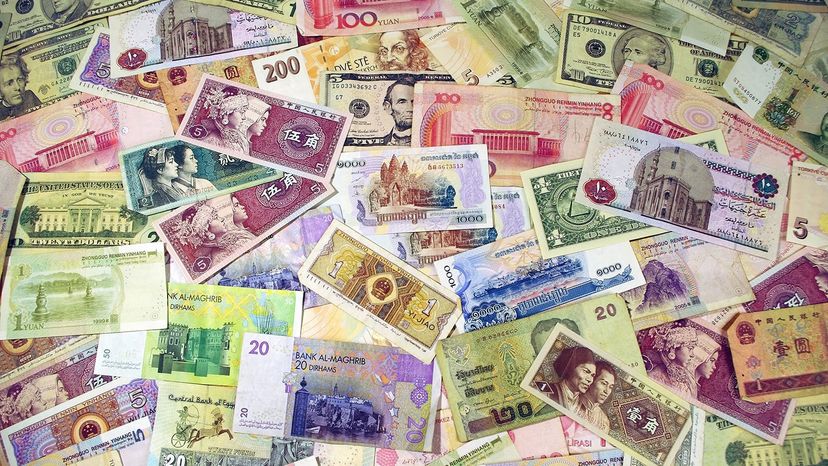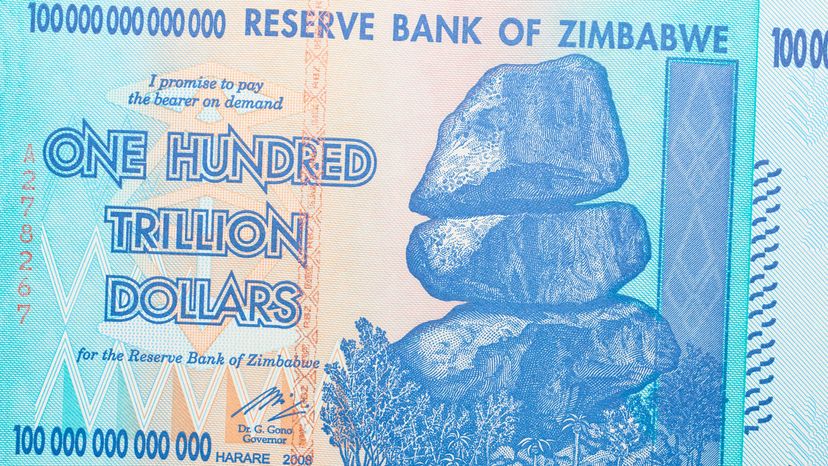
To make this question answerable, let's start by asking, "How much money is there in actual United States dollars?" Since the statistics for the U.S. are easy to come by, we can examine this question in a couple of different ways.
The first way to look at it might be, "How much cash is there in U.S. currency?" If you took all the bills and coins floating around today in the world and added them all up, how much money would you have? All that hard and easily liquidated currency is known as the M0 money supply or monetary base. This includes the bills and coins in people's pockets and mattresses, the money on hand in bank vaults and all the deposits those banks have at reserve banks [source: Hamilton]. According to the Federal Reserve, there was $5.4 trillion in the M0 supply stream as of Dec. 31, 2022, the most recent data available. (The Fed releases data on the fourth Tuesday of every month related to the previous month, so January 2023 data would be released at the end of Feb. 2023.)
Advertisement
That sounds like an incredible amount, but think about it this way: According to the U.S. Census, there were 334,229,745 people alive in the U.S. on Dec. 31, 2022. If you took all the cash and divided it up equally, each person should have about $16,156 in cash on them (or stuffed under the mattress). Obviously, there's some money missing, but there's an easy explanation for that: The Federal Reserve says that at any given time, about 45 percent of all U.S. banknotes are held overseas.
The rest of the money is in bank accounts of various types, and the Federal Reserve tracks these funds in two different values known as the M1 and M2 money supplies. (M3 has been dropped. More on that below.)
M1 represents all the currency outside the U.S. Treasury, Federal Reserve banks and the vaults of depository institutions. It also includes demand deposits at commercial banks (excluding those amounts held by depository institutions, the U.S. government, foreign banks and official institutions), the Federal Reserve float and other liquid deposits. In December 2022, the M1 money supply for U.S. dollars equaled about $19.7 trillion [source: Federal Reserve].
M2 is the M1 supply, plus small-denomination time deposits (less than $100,000). In December 2022, the M2 money supply was about $21.2 trillion [source: Federal Reserve].
M3 is M2 plus larger CDs. As of March 2006, the Fed stopped tracking the M3 money stock as an economic indicator because it felt it did not add any information on economic activity that was not already available from M2 [source: Federal Reserve].
All told, anyone looking for all the U.S. dollars in the world in December 2022 could expect to find approximately $21.2 trillion in existence, using the M2 money supply definition. If you just want to count the value of notes and coins, there are about U.S. $2.3 trillion worth of notes and coins floating around the globe [source: Federal Reserve].
But suppose you wanted to know the actual number of notes in circulation, rather than how much they were worth? At the end of 2022, the Fed estimated there were 53.2 billion notes (ranging from humble $1 bills to mighty $10,000 bills) in circulation. This information is updated annually.
So, now that we have figured out the U.S. money supply as much as we can, what about the rest of the world?
Advertisement


